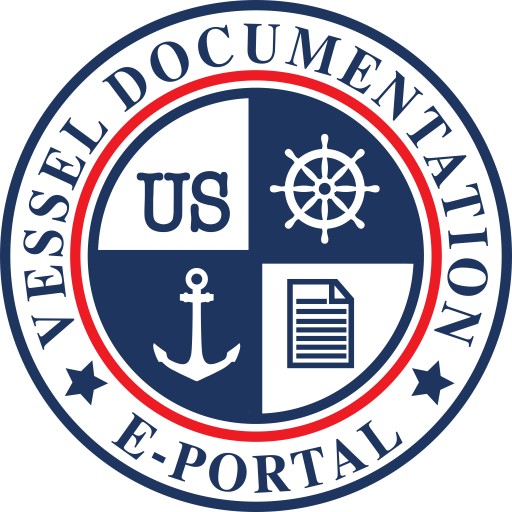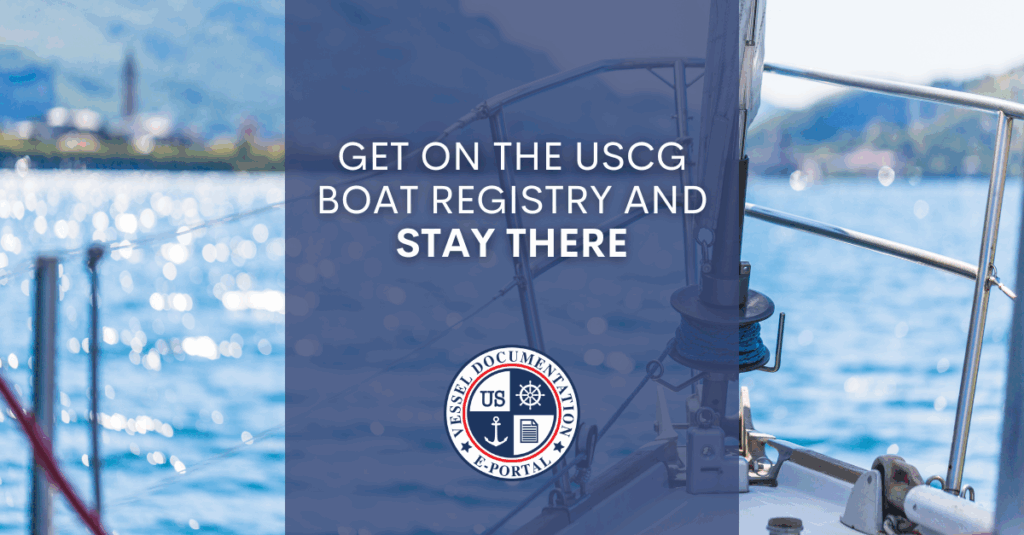The USCG boat registry plays an essential role in maritime operations, offering boat owners a federally recognized system for documenting their vessels. Whether commercial or recreational, registering your vessel with the US Coast Guard offers many legal and operational benefits. Registration is just the beginning—staying listed, updating information, and avoiding lapses demands consistent attention and responsibility.
CG Portal simplifies this entire process. Our platform lets you complete vessel documentation online—no need for complex government websites or confusing processes. We help you join the USCG boat registry and stay compliant, organized, and active without delays or disruption.
The USCG Boat Registry Defined
The USCG boat registry assigns vessels an official number and certificate through a federal documentation system. Managed by the National Vessel Documentation Center (NVDC), the registry serves as legal proof of ownership and nationality. The federal government uses this registry to enforce compliance and ensure vessels meet standards for trade, navigation, and financing.
Documentation through this registry is separate from state titling and registration. Some vessels must be federally documented, while others may do so voluntarily. CG Portal helps users determine what applies to their particular situation.
Who Must Register and Who Can Opt In
Certain vessels are required by law to be on the USCG boat registry. If your vessel is five net tons or more and used in fishing activities or coastwise trade in U.S. waters, federal documentation is mandatory. These operations rely on proper documentation not only for compliance but also to secure insurance, financing, and access to certain waterways.
However, many vessels are eligible even if not required to register. Recreational vessels that meet the five-net-ton threshold (usually about 26 feet or longer) can choose to document with the Coast Guard instead of going through their state. This is often preferred for those who cruise internationally or need to provide a bank with a preferred ship mortgage.
CG Portal allows both required and optional applicants to complete their filings online. We provide a simplified interface that filters requirements based on your vessel’s specifications and intended use.
The USCG Boat Registry’s History
The USCG boat registry has deep roots in the country’s maritime tradition. Vessel documentation predates the formation of the Coast Guard itself, with origins tracing back to the late 18th century under the U.S. Treasury Department. The system was designed to establish proof of American ownership and control over vessels engaged in commerce, particularly for those operating along coastlines and across national borders.
Over the decades, the registry evolved as maritime law, trade, and technology developed. Federal vessel documentation has remained a constant, giving vessels the legal identity they need to operate across jurisdictions and participate in global commerce. The creation of the NVDC streamlined the process further, but gaps still exist—especially for those navigating the complexities for the first time.
At CG Portal, we bridge those gaps. We’ve built a modern tool that makes the registry accessible, ensuring that boat owners of today can participate in a system built over centuries without having to decode archaic forms or legal jargon.
Our Role in Helping With the Boat Documentation Process
When registering a vessel, a small mistake can result in long delays or even a rejection. CG Portal reduces those risks. We’ve taken the guesswork out of the documentation process by providing users with an easy-to-navigate online platform.
From the moment you begin, our system walks you through the questions necessary to determine your vessel’s eligibility, use type, and documentation status. You’re prompted to upload any required documents—such as bills of sale, builder’s certificates, or identification details—through a secure portal.
Our process includes built-in checks to ensure that what you upload matches what the USCG requires.
Whether you’re applying for the first time or transferring ownership, we’ve configured the platform to adapt to each user’s circumstances. This means that instead of generic instructions, you get clear, relevant guidance every step of the way.
How We Can Help You Stay on the Registry
Filing your initial documentation is just one part of the process. Maintaining your place on the US Coast Guard boat registry requires routine updates, renewals, and sometimes additional forms.
With CG Portal, you can:
- Receive automated alerts when your documentation is coming up for renewal
- File renewal applications directly through your dashboard
- Update endorsements or change vessel information as needed
- Track your documentation status without needing to call or email the NVDC
We help prevent lapses that could lead to operational delays, financial setbacks, or regulatory issues. When your documentation status is current, you avoid interruptions whether you’re planning a voyage, entering a port, or applying for marine insurance.
Documentation Beyond Initial Registration
Federal documentation can be more than just a certificate—it may include endorsements, mortgages, and changes in ownership. These services are often required during a vessel’s lifespan, especially for those operating commercially or financing their boats.
CG Portal supports a wide range of filings, including:
- Adding or changing vessel endorsements (such as coastwise, fishery, or recreational)
- Recording or satisfying vessel mortgages
- Reinstating lapsed documentation
- Transferring ownership due to sale, inheritance, or business restructuring
Because our platform centralizes all documentation functions in one place, you don’t have to manage multiple forms or track different deadlines. It’s a single portal built around your vessel’s full life on the registry.
Rush Processing for When Timing Matters
Delays in registration can create serious problems for vessel owners. You might miss a scheduled charter, fail to secure a slip, or lose out on financing because your vessel’s documentation isn’t current.
For time-sensitive cases, CG Portal offers rush filing options. These allow users to prioritize their applications, helping speed up processing times at the NVDC. If you have an urgent voyage, pending transaction, or inspection, rush services help ensure your paperwork won’t be the cause of delay.
Our tracking system also allows you to monitor the status of your documentation in real time, so you’re never left wondering if your application was received or where it stands in the queue.
Avoiding Common Registration Mistakes
Federal documentation can seem deceptively simple, but it’s easy to run into issues. Many applicants enter vessel names incorrectly, omit required documents, or misidentify their net tonnage. These kinds of mistakes often result in rejections or requests for correction.
CG Portal is built to catch those errors early. Our smart interface reviews your entries and flags missing or potentially incorrect information before submission. That means fewer rejections, faster approvals, and a smoother experience overall.
Every Process of the US Coast Guard Boat Registry Simplified
The US Coast Guard boat registry is a longstanding part of maritime regulation, built to establish legal identity and ownership for eligible vessels. But just because it’s a historic system doesn’t mean you have to deal with outdated filing methods or unnecessary confusion.
CG Portal modernizes the process, offering boat owners a seamless, accurate, and efficient way to get registered and stay that way. We handle the technical requirements so you can focus on the bigger picture: keeping your vessel compliant, seaworthy, and ready for whatever’s ahead.
For a better experience on the US Coast Guard boat registry, trust us to manage your documentation from start to finish—and beyond.

